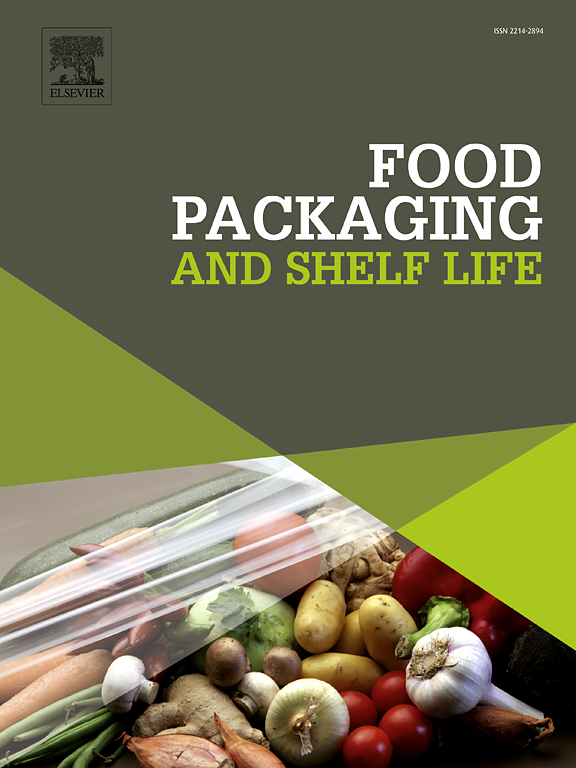Based on surface roughness and hydrophobicity to reduce the bacterial adhesion to collagen films for the ability to enhance the shelf life of food
IF 8.5
1区 农林科学
Q1 FOOD SCIENCE & TECHNOLOGY
引用次数: 0
Abstract
Bacterial adhesion to food, production machinery, and packaging can lead to contamination of foods and accelerate their spoilage process. In this study, cowhide collagen fiber was used as raw materials, and grinding and high-pressure homogenization were used to prepare two different scales of collagen fiber to study the effect of surface roughness on the properties and bacterial adhesion of collagen films, then zein was added to collagen fiber to improve its hydrophobicity. The results showed that when collagen fiber was homogenized by high-pressure and zein content was increased to 40 wt%, the roughness average (Ra) of films decreased from 17.39 nm to 4.71 nm, and the contact angle increased from 88.33 ° to 116.20 °. With the decrease of roughness and the increase of hydrophobicity, the adhesion ability of Leuconostoc mesenteroides, Staphylococcus aureus and Escherichia coli on the film was weakened. In addition, with the increase of zein addition, the tensile strength (TS) of films prepared by grinding increased from 10.850 MPa to 23.252 MPa, and the elongation at break (EAB) decreased from 74.97 % to 31.68 %, while the TS of the films prepared by high-pressure homogenization increased from 17.558 MPa to 23.414 MPa, the EAB increased from 30.94 % to 55.71 %. The study provides a new method for reducing the bacteria's adhesion to the surface of collagen based films.
求助全文
约1分钟内获得全文
求助全文
来源期刊

Food Packaging and Shelf Life
Agricultural and Biological Sciences-Food Science
CiteScore
14.00
自引率
8.80%
发文量
214
审稿时长
70 days
期刊介绍:
Food packaging is crucial for preserving food integrity throughout the distribution chain. It safeguards against contamination by physical, chemical, and biological agents, ensuring the safety and quality of processed foods. The evolution of novel food packaging, including modified atmosphere and active packaging, has extended shelf life, enhancing convenience for consumers. Shelf life, the duration a perishable item remains suitable for sale, use, or consumption, is intricately linked with food packaging, emphasizing its role in maintaining product quality and safety.
 求助内容:
求助内容: 应助结果提醒方式:
应助结果提醒方式:


